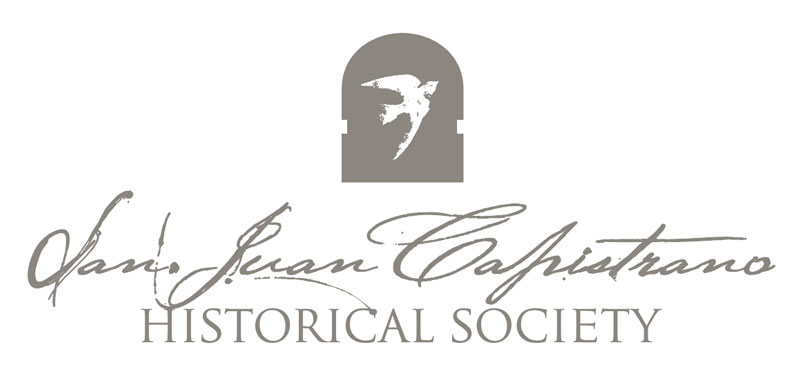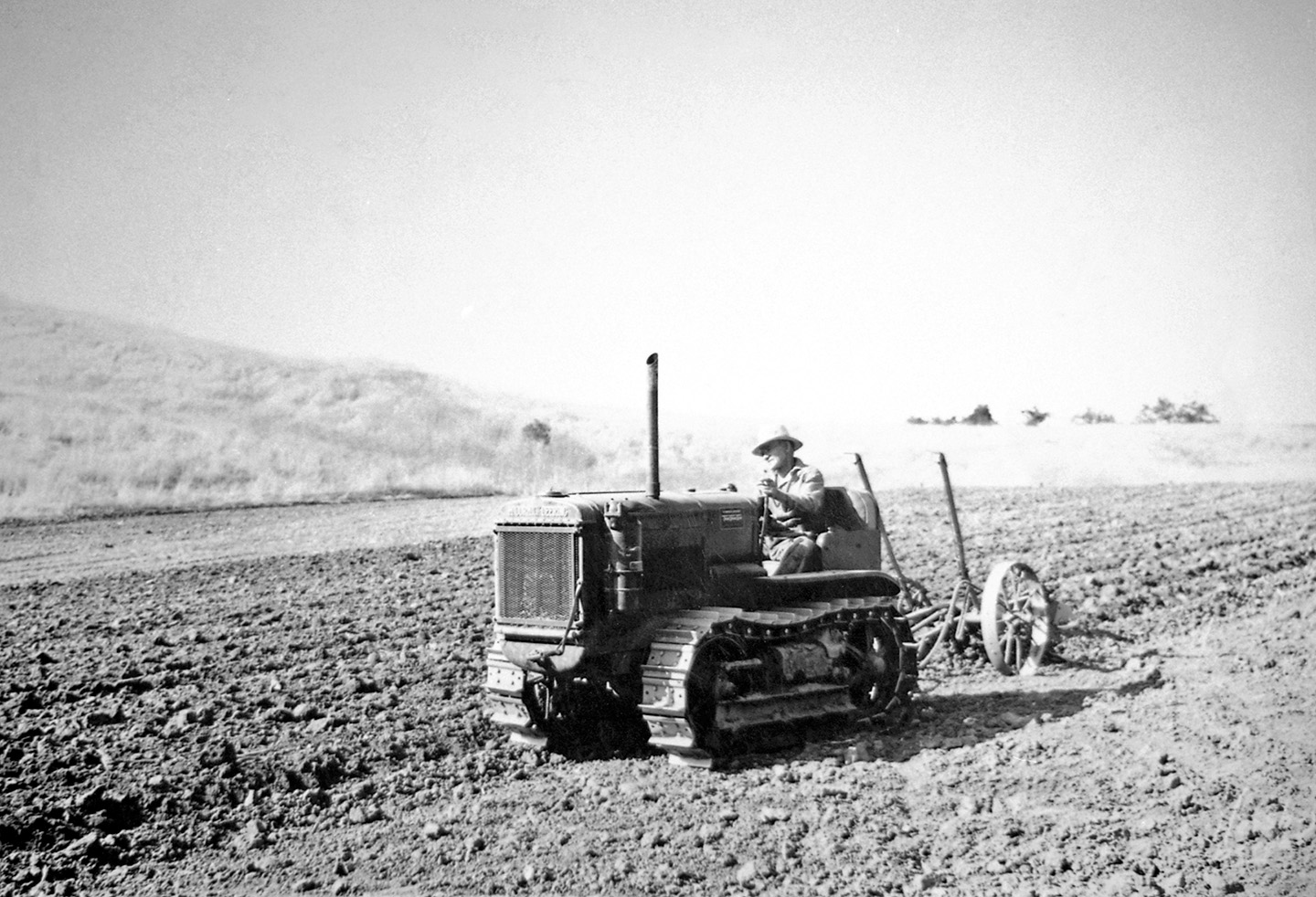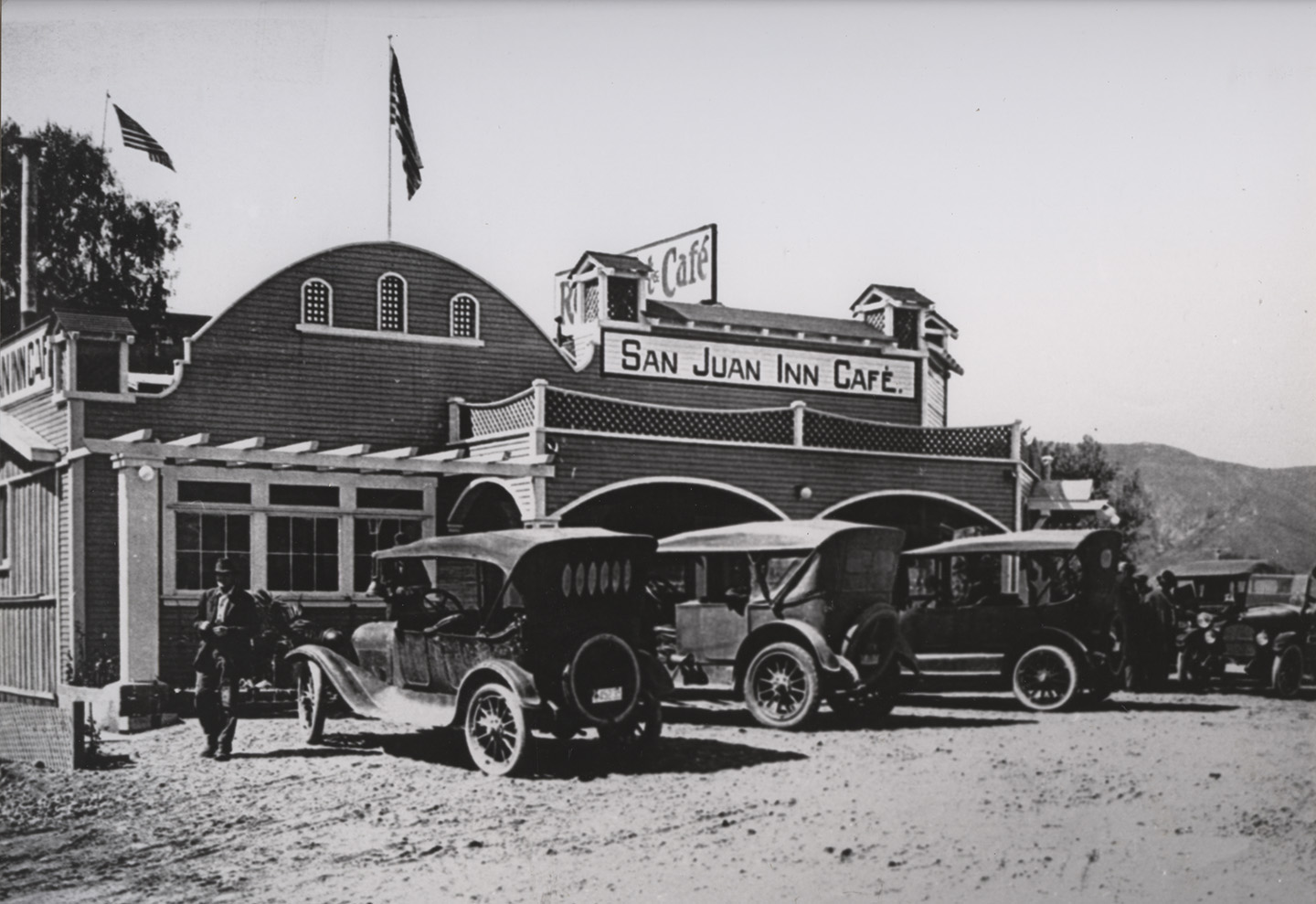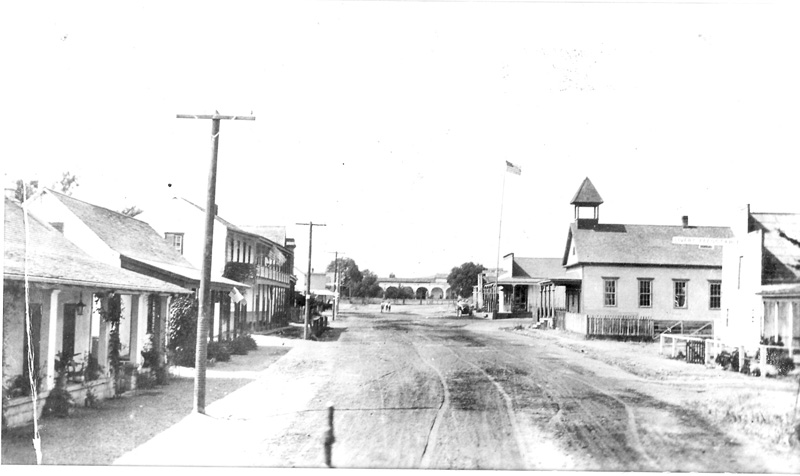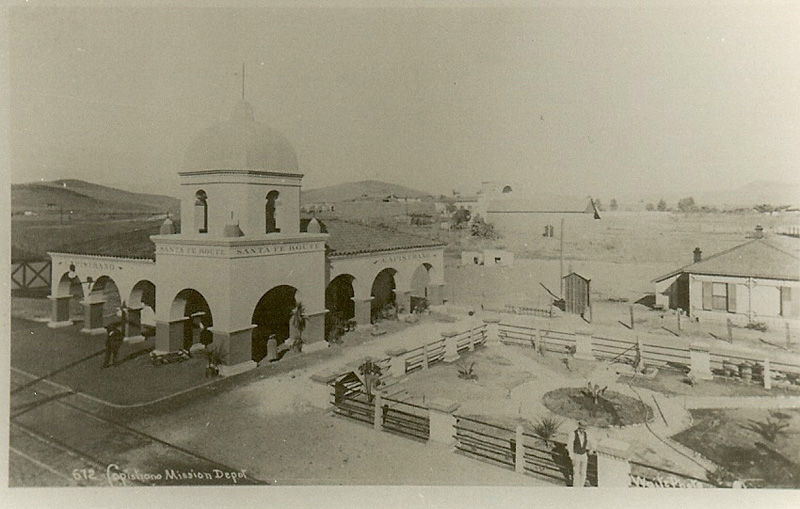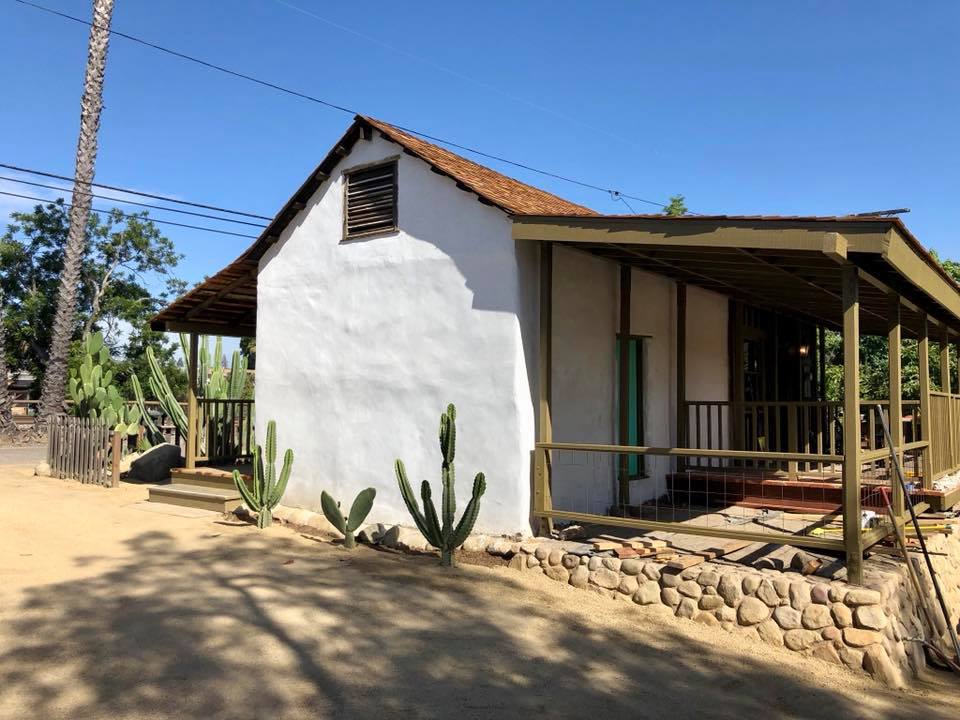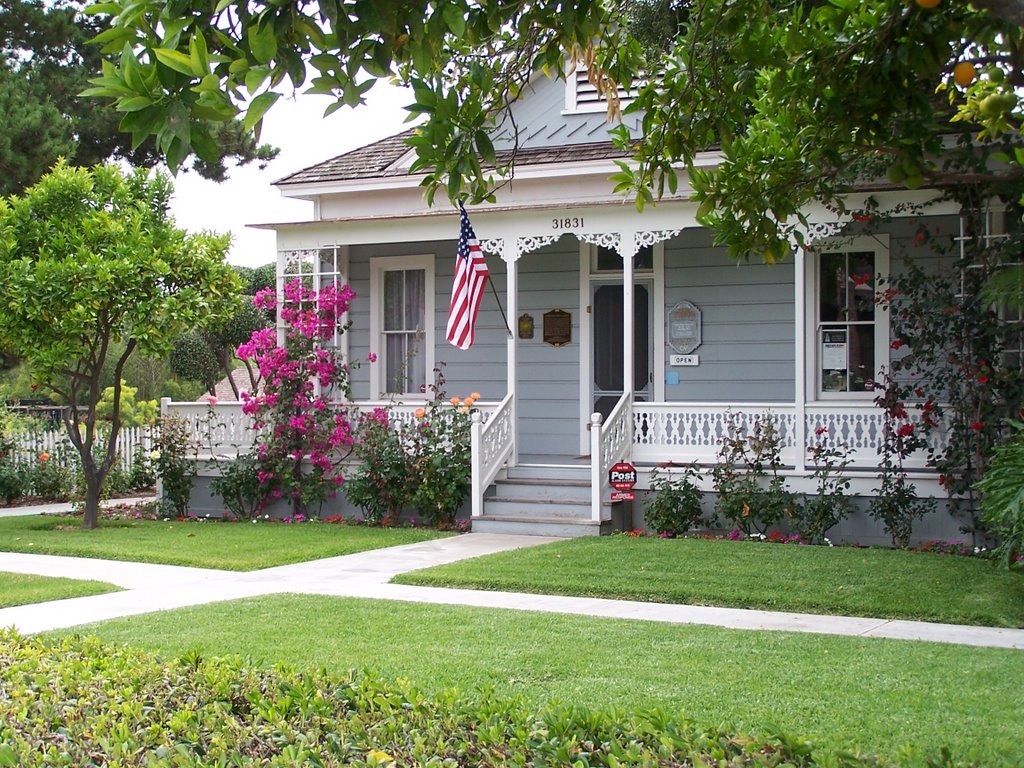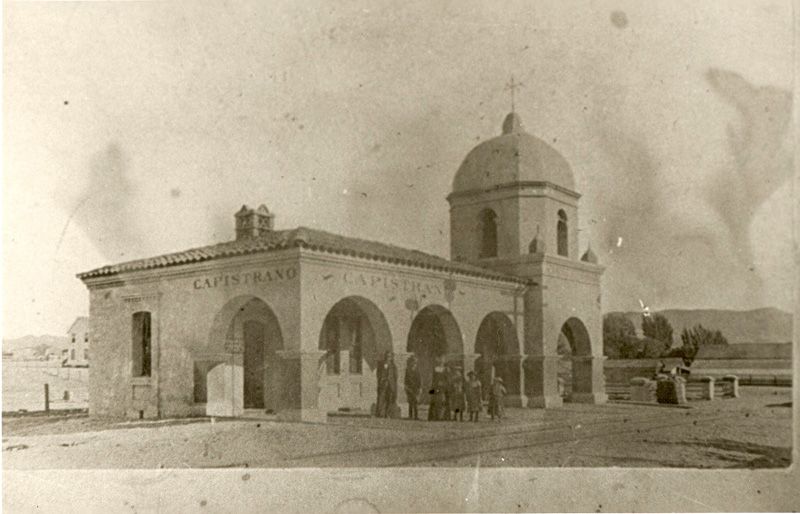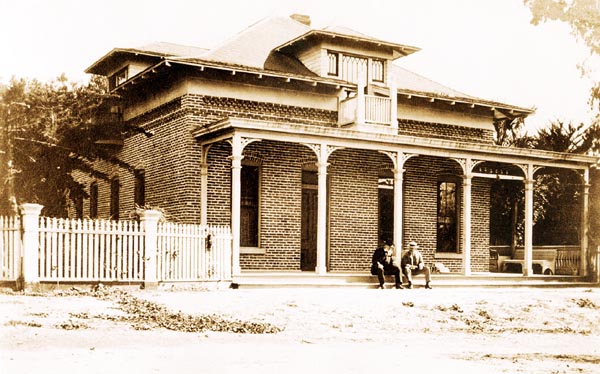The old Santa Fe Railroad Dept has long been an integral part of San Juan’s history and lore. It all began in 1887 when a railroad track was laid through town to connect Los Angeles and San Diego. First, a Nordic-style wood frame building was erected, and then replaced in 1894 by the present day Mission-style building. The new brick depot was at first only a small cube with a bell tower, telegraph office, waiting room, and storage room for freight. The roof tiles are believed to have come from the Mission ruins.
The Depot has been the scene of any number of events, some historic and some with a degree of levity. Memorable is when our town drunk fell asleep in the middle of the tracks and had a train ride over him. He never received a scratch but complained about being awakened when some friends ran from the Mexico Lindo Bar nearby to see if he was okay. Earlier in 1889, Modesta Avila strung her laundry across the tracks to protest the railroad’s existence and was sentenced to San Quentin for her misdeeds. Then there was the time when in evenings after the dispatcher left for home and someone wanted to board a train, they would put a washtub alongside the tracks and lit a fire to signal the train to stop.
In 1925 San Juan was the scene of the last great train robbery in Orange County. One evening as the train was traveling slowly through town; a robber jumped to the ladder on the side of a car, climbed on top, kicked through a side glass window, then shot down into the car and wounded the attendant. He lowered himself down a rope ladder, broke a mail car door window and reached through to un-latch the door and gain access. He rifled the mail pouches and strongbox then jumped off the train and presumably caught a southbound train. The wounded attendant later was found and rushed to the hospital, but passed away. It was discovered that only five dollars was taken from the strongbox but $2,100 was stolen from the mail sacks. Despite offers of rewards, the robber/killer was never apprehended.
Then there was an event of a different sort in the 1980s, when former Mayor Larry Bucheim and some friends dressed up as deputies with badges and side arms. They boarded the train in Santa Ana with two guys bound in handcuffs. The train conductor wanted to know what this was all about and Larry said they had just rounded up these two unseemly miscreants and had to take them to San Juan Capistrano to be tried in our local courthouse (which we didn’t have). The conductor had them ride in the back end of the train but this did not stop the passengers from going out of their way to see what was happening.
When the train stopped at our Depot, up rode a large group of cowboys with their guns prominently displayed. They boarded the train and forced “the deputies” out and made them lie down on the pavement. They took their guns and the two desperados and rode off quickly out of town. Pandemonium broke out with the passengers, train crew, and visitors around the depot. It took quite a while for Larry to explain that everything was all right and just San Juan’s way of celebrating the return of the Swallows to the Mission.
On September 25, 1942, during WWII, a special train arrived unannounced but soon it became apparent that President Franklin D. Roosevelt was on board. Earlier the town had been aroused when Marines arrived in trucks, surrounded the Depot, and some were even posted on top of nearby buildings with machine guns. A limousine picked up the President at the Depot; he was then driven to the Mission and paused by Father Arthur Hutchison to be blessed. Roosevelt then went on to Camp Pendleton for a visit.
Traveling by train ceased in the ‘50s and the Depot was boarded up from 1966 to 1974. Next came the restaurant period. Several came and went, but it wasn’t until the present operators moved their restaurant Sarducci’s to the Depot that a restaurant at this location became successful. Traveling by train started again when Amtrak and Metrolink began to provide service in the 1990’s.
